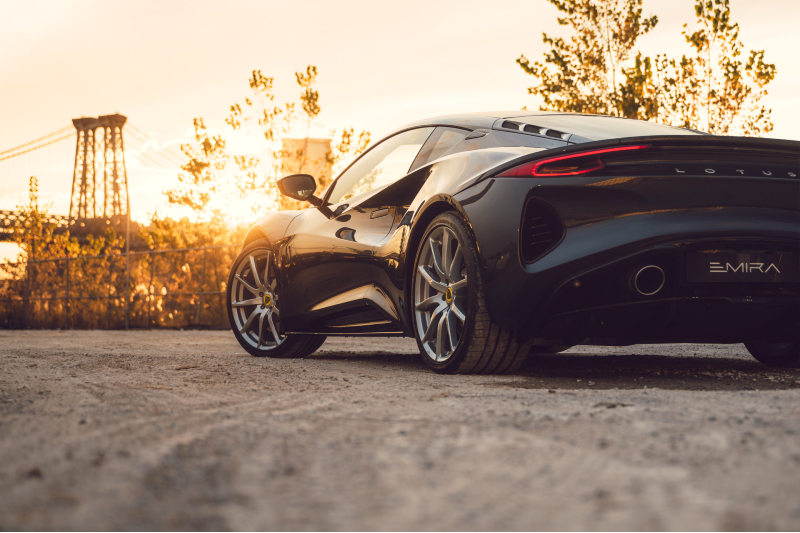
Tesla has broken the supercar mold of gas-powered engines. With EV models now reaching and surpassing combustible rivals in acceleration by reaching 60 mph in under 2 seconds, the Lotus car company responded by making the stunning decision to end its entire petrol-powered line.
To mark this decision, the 2023 Lotus Emira will be the last of its kind. This will be the last gas-powered, combustible engine car sold from Lotus and the best of its breed. Beginning in November, Lotus is taking the Emira on a 13-city U.S. tour that will end on Dec. 11 in New Jersey. As Lotus takes the car to stateside streets for the first and last time, visitors lucky enough to have the Lotus Emira in town can stop by to check out the ride up close and in-person.
Related Guides
Building on the legacy of the Elise, Exige, and Evora, the 2023 Emira represents a leap forward, launching from Lotus’ automotive hallmarks — striking design, dynamic performance and handling, outstanding aerodynamics, and an incredible driving experience.
Powering the Emira are two different options, available to customers at the end of 2022. The base model is an AMG-sourced 2.0-liter turbocharged four-cylinder engine that pumps out roughly 360 horsepower and is coupled exclusively to an AMG seven-speed, dual-clutch transmission.
Customers after more power can opt for a larger 3.5-liter supercharged Toyota V6 variant that’s previously only been available in the Elise and Exige. This engine is driven with 395 horsepower and will be offered in a six-speed manual as well as a six-speed automatic. Developed on a new lightweight bonded aluminum chassis, this is technology pioneered and sustained as an intrinsic part of Lotus’ sports car DNA.
The Emira rides on 20-inch ultra-lightweight V-spoke wheels. The forged alloy discs are diamond cut to create a premium two-tone finish with silver and gloss black versions also available. Two-piece disc brakes, grab-branded calipers, and a Lotus Tyre Pressure Monitoring System also come standard.
Lotus increased its normally spartan interior to make the Emira roomier. This includes optional 12-way power-adjustable seats, greater storage space, a digital instrument panel, and a flat-bottomed steering wheel. The sports car’s array of available driver-assist features include adaptive cruise control, a driver attention monitor, traffic-sign information, lane-departure warnings, lane-change assist, and rear cross-traffic alerts.
Filling out the exterior of this aerodynamic beast are all-around LED lights, a titanium-finished exhaust, heated power-fold door mirrors, and rear parking sensors. Front bumper air blades, front splitter, side sills, and a rear diffuser are all finished in the Emira’s gloss black Lower Black Pack. These are set off by six initial exterior color choices with more hues arriving in 2022.
It’s hard to imagine a world where gas-powered vehicles aren’t produced anymore, but automakers are responding to a dramatically shifting landscape. Should the majority of its customers demand it, Lotus will undoubtedly take that step. The end of its combustible supercars represents a step in that direction.
The Emira is the first vehicle to debut under Vision80, the automaker’s new long-term branding strategy. Lotus hopes to develop products, purchasing solutions, and cars that will remain relevant through 2028.
To get more details on the new Emira and to check out where the car will be checking in on its next tour stop, visit Lotus Cars.
Read More: The Lotus Radford Type 62-2 — a Retro Supercar Done Right



